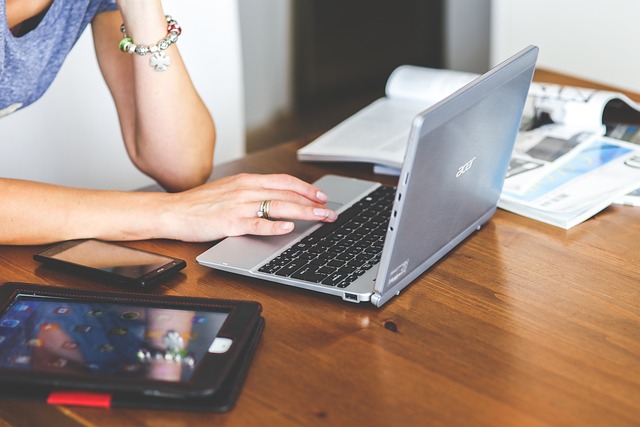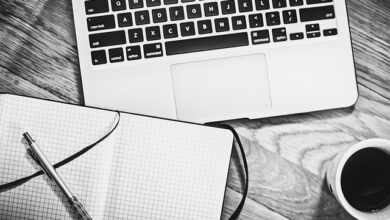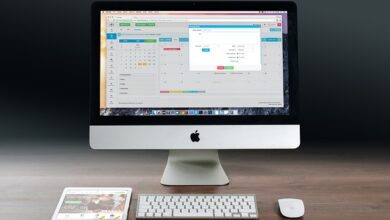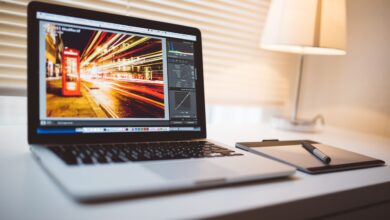How to Use AI to Create Professional Logos & Branding

In today’s fast-paced digital world, creating a professional logo and cohesive branding is essential for businesses, startups, and even individuals looking to establish a strong online presence. Traditionally, designing a logo required hiring a professional graphic designer or spending hours learning complex design software like Adobe Illustrator. However, thanks to advancements in artificial intelligence (AI), creating professional logos and branding materials has become faster, easier, and more accessible than ever before.
This article will guide you through the process of using AI-powered tools to create stunning logos and branding elements. We’ll explore how AI works in design, recommend top AI logo generators, and provide tips for ensuring your final product aligns with your brand identity.
Why Use AI for Logo Design?
Before diving into the “how,” let’s understand the “why.” Here are some compelling reasons why AI is revolutionizing logo design:
1. Speed and Efficiency
AI-powered tools can generate multiple logo concepts within seconds, saving you time compared to traditional methods that require back-and-forth communication with designers.
2. Cost-Effectiveness
Hiring a professional designer can be expensive, especially for small businesses or startups on tight budgets. AI tools offer affordable subscription plans or even free options for basic designs.
3. Customization Options
AI tools allow users to tweak colors, fonts, symbols, and layouts until they achieve their desired look. This level of customization ensures that the final product reflects your unique brand identity.
4. Accessibility
You don’t need any prior design experience to use AI tools. These platforms are designed to be intuitive and user-friendly, making them accessible to anyone.
5. Consistency Across Branding Materials
Many AI tools go beyond just logos, offering templates for business cards, social media graphics, websites, and more. This helps maintain consistency across all your branding materials.
How AI Works in Logo Design
AI logo generators leverage machine learning algorithms trained on vast datasets of existing logos and design principles. When you input specific details about your brand—such as its name, industry, values, preferred colors, and style—the AI analyzes this information and generates tailored logo options based on similar successful designs.
The process typically involves:
- Input Stage: You provide keywords, preferences, and other relevant details.
- Generation Stage: The AI creates several logo variations using pre-designed templates and creative combinations.
- Customization Stage: You refine the generated logos by adjusting elements like typography, color schemes, and layout.
- Export Stage: Once satisfied, you download high-resolution files suitable for both digital and print use.
Top AI-Powered Tools for Creating Logos & Branding
Here are some of the best AI-driven platforms available today for crafting professional logos and branding:
1. Looka (formerly Logojoy)
Why Choose It?
Looka combines AI technology with human-like creativity to produce polished, modern logos. Its intuitive interface makes it easy for beginners to navigate while still offering advanced customization options.
Key Features:
- Drag-and-drop editor for precise adjustments
- Brand kit generation including color palettes, fonts, and mockups
- Integration with Shopify, WordPress, and other platforms
- High-resolution downloads in PNG, SVG, and PDF formats
Pricing:
Starts at $20 for a basic package; premium packages range from $65 to $195 depending on additional assets and file types.
2. Canva Pro
Why Choose It?
Canva is one of the most popular design tools globally, and its AI-powered features make logo creation simple yet effective. While not exclusively an AI logo generator, Canva offers smart suggestions and templates optimized for branding.
Key Features:
- Thousands of customizable logo templates
- AI-driven text and image suggestions
- Collaboration tools for team projects
- Extensive library of icons, illustrations, and fonts
Pricing:
Free version available; Pro plan starts at $12.99/month, unlocking unlimited access to premium templates and features.
3. Tailor Brands
Why Choose It?
Tailor Brands uses AI to analyze your brand personality and create a comprehensive visual identity, including logos, social media posts, and marketing materials.
Key Features:
- Interactive questionnaire to define your brand style
- Real-time previews of logo variations
- Complete branding kits with fonts, colors, and patterns
- Social media integration for seamless uploads
Pricing:
Subscription-based pricing starts at $9.99/month, which includes ongoing access to branding tools and updates.
4. Hatchful by Shopify
Why Choose It?
Hatchful is ideal for entrepreneurs and small business owners who want quick, free logo solutions. Developed by Shopify, this tool focuses on simplicity and functionality.
Key Features:
- Industry-specific templates for e-commerce, tech, fashion, etc.
- Easy-to-use drag-and-drop editor
- Free logo downloads in low resolution; paid upgrades for HD versions
- Seamless integration with Shopify stores
Pricing:
Basic logos are free; premium packages start at $20 for high-resolution files and additional branding assets.
5. Wix Logo Maker
Why Choose It?
Wix Logo Maker is part of the larger Wix ecosystem, making it perfect for users planning to build a website alongside their branding efforts. Its AI engine tailors designs to match your brand’s tone and style.
Key Features:
- Smart prompts to guide the design process
- Instant logo variations with dynamic previews
- Integration with Wix websites and email marketing tools
- Affordable pricing for full branding kits
Pricing:
Logo packages start at $29 for basic rights; higher tiers include web hosting and domain registration.
Step-by-Step Guide to Using AI for Logo Creation
Follow these steps to create a professional logo using AI-powered tools:
Step 1: Define Your Brand Identity
Before jumping into design, clarify your brand’s core elements:
- What does your brand stand for? (Mission, vision, values)
- Who is your target audience?
- What emotions do you want your logo to evoke? (Trust, innovation, fun, luxury, etc.)
- Preferred colors, fonts, and symbols?
Step 2: Choose an AI Tool
Select an AI platform that aligns with your needs and budget. Consider factors like ease of use, customization capabilities, and export options.
Step 3: Input Your Preferences
Answer questions or fill out forms provided by the AI tool. Be as detailed as possible to ensure accurate results. For example:
- Enter your company name.
- Select your industry.
- Choose preferred colors and styles.
Step 4: Review Generated Options
The AI will present several logo concepts. Browse through them and identify ones that resonate with your vision. Don’t settle immediately—explore different iterations.
Step 5: Customize Your Logo
Most AI tools allow you to tweak the generated logos. Experiment with:
- Font styles (serif, sans-serif, handwritten, etc.)
- Color schemes (primary, secondary, accent colors)
- Layout arrangements (horizontal, vertical, circular, etc.)
Step 6: Download and Test
Once finalized, download your logo in various formats (PNG, SVG, JPG). Test it across different mediums—website headers, social media profiles, merchandise—to ensure versatility.
Step 7: Expand Your Branding
Use the same AI tool or complementary platforms to create matching branding materials, such as:
- Business cards
- Email signatures
- Letterheads
- Social media banners
Tips for Maximizing AI-Generated Logos
While AI simplifies the design process, following these tips will help you achieve professional-grade results:
1. Keep It Simple
Avoid cluttered designs. A clean, minimalistic logo tends to be more memorable and versatile.
2. Choose Timeless Elements
Steer clear of trendy fonts or overly complex graphics that may feel outdated in a few years.
3. Ensure Scalability
Your logo should look good whether it’s displayed on a billboard or a tiny favicon.
4. Test for Versatility
Check how your logo appears in black and white, grayscale, and reversed colors (light text on dark backgrounds).
5. Seek Feedback
Share your logo with colleagues, friends, or focus groups to gather constructive criticism before finalizing.




